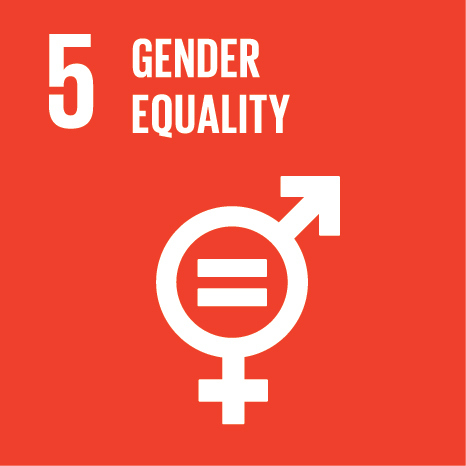|
Theory Of Public Goods
In economics, a public good (also referred to as a social good or collective good)Oakland, W. H. (1987). Theory of public goods. In Handbook of public economics (Vol. 2, pp. 485-535). Elsevier. is a good that is both non-excludable and non-rivalrous. For such goods, users cannot be barred from accessing or using them for failing to pay for them. Also, use by one person neither prevents access of other people nor does it reduce availability to others. Therefore, the good can be used simultaneously by more than one person. This is in contrast to a common good, such as wild fish stocks in the ocean, which is non-excludable but rivalrous to a certain degree. If too many fish were harvested, the stocks would deplete, limiting the access of fish for others. A public good must be valuable to more than one user, otherwise, the fact that it can be used simultaneously by more than one person would be economically irrelevant. Capital goods may be used to produce public goods or services ... [...More Info...] [...Related Items...] OR: [Wikipedia] [Google] [Baidu] |
Roads
A road is a linear way for the conveyance of traffic that mostly has an improved surface for use by vehicles (motorized and non-motorized) and pedestrians. Unlike streets, the main function of roads is transportation. There are many types of roads, including parkways, avenues, controlled-access highways (freeways, motorways, and expressways), tollways, interstates, highways, thoroughfares, and local roads. The primary features of roads include lanes, sidewalks (pavement), roadways (carriageways), medians, shoulders, verges, bike paths (cycle paths), and shared-use paths. Definitions Historically many roads were simply recognizable routes without any formal construction or some maintenance. The Organization for Economic Co-operation and Development (OECD) defines a road as "a line of communication (travelled way) using a stabilized base other than rails or air strips open to public traffic, primarily for the use of road motor vehicles running on their own wheels", which ... [...More Info...] [...Related Items...] OR: [Wikipedia] [Google] [Baidu] |
Cultural Heritage
Cultural heritage is the heritage of tangible and intangible heritage assets of a group or society that is inherited from past generations. Not all heritages of past generations are "heritage"; rather, heritage is a product of selection by society. Cultural heritage includes cultural property, tangible culture (such as buildings, monuments, landscapes, books, works of art, and artifacts), intangible heritage, intangible culture (such as folklore, traditions, language, and knowledge), and natural heritage (including culturally significant landscapes, and biodiversity).Ann Marie Sullivan, Cultural Heritage & New Media: A Future for the Past, 15 J. MARSHALL REV. INTELL. PROP. L. 604 (2016) https://repository.jmls.edu/cgi/viewcontent.cgi?article=1392&context=ripl The term is often used in connection with issues relating to the protection of Indigenous intellectual property. The deliberate act of keeping cultural heritage from the present for the future is known as Conservation (cul ... [...More Info...] [...Related Items...] OR: [Wikipedia] [Google] [Baidu] |
Contemporary History
Contemporary history, in English-language historiography, is a subset of modern history that describes the historical period from approximately 1945 to the present. Contemporary history is either a subset of the late modern period, or it is one of the three major subsets of modern history, alongside the early modern period and the late modern period. In the social sciences, contemporary history is also continuous with, and related to, the rise of postmodernity. Contemporary history is politically dominated by the Cold War (1947–1991) between the Western Bloc, led by the United States, and the Eastern Bloc, led by the Soviet Union. The confrontation spurred fears of a nuclear war. An all-out "hot" war was avoided, but both sides intervened in the internal politics of smaller nations in their bid for global influence and via proxy wars. The Cold War ultimately ended with the Revolutions of 1989 and the dissolution of the Soviet Union in 1991. The latter stages and after ... [...More Info...] [...Related Items...] OR: [Wikipedia] [Google] [Baidu] |
Biodiversity
Biodiversity or biological diversity is the variety and variability of life on Earth. Biodiversity is a measure of variation at the genetic (''genetic variability''), species (''species diversity''), and ecosystem (''ecosystem diversity'') level. Biodiversity is not distributed evenly on Earth; it is usually greater in the tropics as a result of the warm climate and high primary productivity in the region near the equator. Tropical forest ecosystems cover less than 10% of earth's surface and contain about 90% of the world's species. Marine biodiversity is usually higher along coasts in the Western Pacific, where sea surface temperature is highest, and in the mid-latitudinal band in all oceans. There are latitudinal gradients in species diversity. Biodiversity generally tends to cluster in hotspots, and has been increasing through time, but will be likely to slow in the future as a primary result of deforestation. It encompasses the evolutionary, ecological, and cultural ... [...More Info...] [...Related Items...] OR: [Wikipedia] [Google] [Baidu] |
Environmental Issues
Environmental issues are effects of human activity on the biophysical environment, most often of which are harmful effects that cause environmental degradation. Environmental protection is the practice of protecting the natural environment on the individual, organizational or governmental levels, for the benefit of both the environment and humans. Environmentalism is a social and environmental movement that addresses environmental issues through advocacy, legislation education, and activism. Environment destruction caused by humans is a global, ongoing problem. Water pollution also cause problems to marine life. Most scholars think that the project peak global world population of between 9-10 billion people, could live sustainably within the earth's ecosystems if human society worked to live sustainably within planetary boundaries. The bulk of environmental impacts are caused by the most wealthy populations in the globe consuming too much industrial goods. The UN Environmental ... [...More Info...] [...Related Items...] OR: [Wikipedia] [Google] [Baidu] |
Youth Health
Adolescent health, or youth health, is the range of approaches to preventing, detecting or treating young people's health and well-being. The term adolescent and young people are often used interchangeably, as are the terms Adolescent Health and Youth Health. Young people's health is often complex and requires a comprehensive, biopsychosocial approach. Adolescent health risks Because adolescence represents a life stage of increasing psychosocial independence, but one of limited legal and social rights (for those who have not reached the legal age of adulthood where they reside), adolescent health exists at the intersection of many forces often outside of the control of individual young people. Some young people might have a history of adverse childhood experiences (ACEs), or may be actively living in or experiencing the situations described as ACEs. The Adverse Childhood Experiences Study suggests that ACEs are common, and are predictive of adverse physical health outcomes (ische ... [...More Info...] [...Related Items...] OR: [Wikipedia] [Google] [Baidu] |
Women's Health
Women's health differs from that of men in many unique ways. Women's health is an example of population health, where health is defined by the World Health Organization as "a state of complete physical, mental and social well-being and not merely the absence of disease or infirmity". Often treated as simply women's reproductive health, many groups argue for a broader definition pertaining to the overall health of women, better expressed as "The health of women". These differences are further exacerbated in developing countries where women, whose health includes both their risks and experiences, are further disadvantaged. Although women in industrialised countries have narrowed the gender gap in life expectancy and now live longer than men, in many areas of health they experience earlier and more severe disease with poorer outcomes. Gender remains an important social determinant of health, since women's health is influenced not just by their biology but also by conditions such ... [...More Info...] [...Related Items...] OR: [Wikipedia] [Google] [Baidu] |
Men's Health
''Men's Health'' (''MH''), published by Hearst, is the world's largest men's magazine brand, with 35 editions in 59 countries. It is also the best-selling men's magazine on U.S. newsstands. Started as a men's health magazine by Rodale, Inc. in Emmaus, Pennsylvania, the magazine currently covers various men's lifestyle topics such as fitness, nutrition, fashion and sexuality. The magazine's website, MensHealth.com, averages over 118 million page views a month. History Started by Mark Bricklin in the US in 1986 as a health magazine, ''Men's Health'' evolved into a lifestyle magazine, covering fitness, nutrition, relationships, travel, technology, fashion and finance. Bricklin, Rodale, Inc. editors Larry Stains and Stefan Bechtel produced three newsstand test issues. The results led Rodale to start ''Men's Health'' as a quarterly magazine in 1988 and begin to sell subscriptions. Bricklin, who was editor-in-chief of ''Prevention'' magazine, appointed Michael J. Lafavore (bor ... [...More Info...] [...Related Items...] OR: [Wikipedia] [Google] [Baidu] |
Global Public Good
In traditional usage, a global public good (or global good) is a public good available on a more-or-less worldwide basis. There are many challenges to the traditional definition, which have far-reaching implications in the age of globalization. Definition In traditional usage, a pure global public good is a good that has the three following properties:Kaul, Inge, Isabelle Grunberg and Marc A. Stern (eds.) (1999). ''Global public goods: international cooperation in the 21st century''. NY: Oxford University Press, Inc.(PDF available.) * It is non-rivalrous. Consumption of this good by anyone does not reduce the quantity available to other agents. * It is non-excludable. It is impossible to prevent anyone from consuming that good. * It is available more-or-less worldwide. This concept is an extension of American economist Paul Samuelson's classic notion of public goods to the economics of globalization. The traditional theoretical concept of public goods does not distinguish wi ... [...More Info...] [...Related Items...] OR: [Wikipedia] [Google] [Baidu] |
Street Lights
A street light, light pole, lamp pole, lamppost, street lamp, light standard, or lamp standard is a raised source of light on the edge of a road or path. Similar lights may be found on a railway platform. When urban electric power distribution became ubiquitous in developed countries in the 20th century, lights for urban streets followed, or sometimes led. Many lamps have light-sensitive photocells that activate the lamp automatically when needed, at times when there is little-to-no ambient light, such as at dusk, dawn, or at the onset of dark weather conditions. This function in older lighting systems could be performed with the aid of a solar dial. Many street light systems are being connected underground instead of wiring from one utility post to another. Street lights are an important source of public security lighting intended to reduce crime. History Preindustrial era Early lamps were used by Greek and Roman civilizations, where light primarily served the purpose of ... [...More Info...] [...Related Items...] OR: [Wikipedia] [Google] [Baidu] |
Lighthouse
A lighthouse is a tower, building, or other type of physical structure designed to emit light from a system of lamps and lenses and to serve as a beacon for navigational aid, for maritime pilots at sea or on inland waterways. Lighthouses mark dangerous coastlines, hazardous shoals, reefs, rocks, and safe entries to harbors; they also assist in aerial navigation. Once widely used, the number of operational lighthouses has declined due to the expense of maintenance and has become uneconomical since the advent of much cheaper, more sophisticated and effective electronic navigational systems. History Ancient lighthouses Before the development of clearly defined ports, mariners were guided by fires built on hilltops. Since elevating the fire would improve the visibility, placing the fire on a platform became a practice that led to the development of the lighthouse. In antiquity, the lighthouse functioned more as an entrance marker to ports than as a warning signal for reefs a ... [...More Info...] [...Related Items...] OR: [Wikipedia] [Google] [Baidu] |






